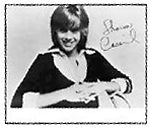“MP3S WILL NEVER catch on!” Such was my Luddite reaction when confronted with the latest wave in the dissemination of prerecorded sounds. Enough is enough. I’ve already witnessed the heyday of vinyl records, 8-track tapes, cassettes, and compact discs. Now, when the latest toys from giants like Sony and Philips—the Minidisc, Digital Compact Cassette (DCC)—fall on stony ground, I smile. I don’t need to purchase my all-time favorite album, David Bowie’s Low, in a fifth format.
As a teenager, I remember feeling embarrassment about Dad’s antiquated record player, which featured obsolete 78- and 16-rpm speeds in addition to the familiar 33 and 45. (Actually, my father’s turntable was once state-of-the-art, as 16-rpm disks—designed for spoken-word recordings—were only manufactured briefly in the ’50s.) Although he’s a classical connoisseur, today compact discs and cassettes compose only a fraction of his library.
Dad was resisting a trend I hadn’t yet recognized: record companies seizing any opportunity to maximize profits by peddling the same products in new configurations.
Since Thomas Edison introduced the phonograph in 1877, countless prerecorded formats have come and gone: wax cylinders (which Edison considered superior to flat disks), wire recordings (the predecessor to magnetic tape), reel-to-reel tapes (the true audiophile’s choice between 1950 and the mid-’60s). If promises of improved quality and convenience don’t seduce consumers, the fat cats just phase out the old standard until little recourse remains but to buckle or do without new music.
If you’re a rabid record collector, your fate is sealed. Whenever the slightest tweak to an existing format launches, artists with rabid followings serve as guinea pigs. Which is often how I came into possession of such samples of the (mostly) now-outmoded items that follow. . . .
Shaped, colored, or picture vinyl: Although I already owned her album No-Man’s Land, I also bought Lene Lovich’s 1982 single “It’s You, Only You (Mein Schmerz)”— for its non-LP B-side. But why did I need the picture disc, which featured Lene’s colorful image, but the exact same tracks? Because I was a die-hard completist. All you had to do was press a record (or sometimes even a tape—check out the Pepto-Bismol swirls on old cassettes of Kate Bush’s Hounds of Love) in an unconventional shape, shade, or size, and I’d cough up.
One-sided 45s: In 1981, some Columbia Records whiz decided that issuing budget-priced singles with only an A-side would increase sales: You’d win over frugal souls who wouldn’t waste valuable pennies paying for an unheard flip and convince curiosity-seekers to sample new artists on the cheap. The label dropped this lame scheme after trials with Elvis Costello and Earth, Wind & Fire went nowhere.
8-track tapes: By the time I could drive, production of these had ceased. The last new title I recall is the Clash’s Combat Rock. But my friends and I inherited our parents’ old cars, which often came equipped with an 8-track deck. That’s because back in 1965, automakers had teamed up with the record companies and introduced these “Stereo-8” systems in all their high-end models. Now department stores were desperate to move unsold dead stock, so we amassed seminal classics by Iggy Pop, Talking Heads, and Lou Reed—which we now unload on e-Bay for obscene sums—at three-for-a-dollar.
Cassette singles: After Sony’s 1979 introduction of the Walkman, cassette sales climbed steadily throughout the ’80s. Early offerings by the Go-Go’s and Thomas Dolby fared poorly, but by 1984—when tapes surpassed LPs in popularity—cassette singles were hot. The charms of this medium were twofold. First, if the consumer was lucky, the hit appeared all by its lonesome on both sides. Simply punch autoreverse on your Walkman and play your new favorite ditty ad nauseam—without picking up a needle or searching the dial. And who could resist a format nicknamed “cassingle,” the best hybrid word since the pork industry coined “hamtastic”?
3-inch CD singles: LPs were big, 45s small. So CD singles should be smaller than CD albums, right? Stupid, stupid, stupid. Playing such miniature discs required a bothersome snap-on adapter, which often caused a rattling noise during playback. By the time manufacturers added indentations in player trays to accommodate these nuisances unencumbered (circa 1988), the format had been largely abandoned.
The list goes on and on: flexi-discs stapled into magazines, records pressed on the backs of breakfast cereal boxes. Although majors today rarely revive any of the aforementioned, in indie rock and dance music—where the presentation is often as carefully crafted as the music—they’re as popular as ever. Hence the USA-shaped disc for tunes from John Linnell’s State Songs and the five-inch 45s of Man Or Astro-Man?.
Which leads us to my latest favorite: MP3. Why? Because it’s the antiformat. There’s no vinyl to scratch, no tape to get mangled—and no variations in color, shape, or dimension. Just music. The physical object has been eliminated. That’s the real reason big companies are nervous about MP3s: If the public bites this time, those bozos might never be able to sell us another new format.
For an in-depth look at obsolete formats, visit the Dead Recording Media Web site of sound recording history at www.rci.rutgers.edu/~dmorton/index.html





